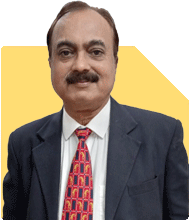Ulhas Joshi | Answer |Ask -Follow
Mutual Fund Expert - Answered on Jul 05, 2023
Prior to joining RankMF as CEO, he was vice president (sales) at IDBI Asset Management Ltd.
Joshi holds an MBA in marketing from Barkatullah University, Bhopal.... more

Hello Sir, I am 37 yrs old. Currently I am doing SIPs in following schemes. 1. HDFC Midcap opportunity fund 3000/- 2. DSP Tax saver fund 3000/- 3. Tata small cap fund. 4000/- 4. Kotak Flexi cap fund 2000/- I want to start SIP of more 8000 in 2 MF, can you pls suggest which category MF should I buy? Also do i need to change existing MF scheme? I don't need Tax saver fund but it gave me around 14% return so I kept it, but ready to switch also.
You can consider starting monthly SIP's in the Funds mentioned below:
1-Kotak Small Cap Fund- Rs.4,000
2-SBI Magnum Midcap Fund-Rs.4,000
You may like to see similar questions and answers below
Omkeshwar Singh | Answer |Ask -Follow
Head, Rank MF - Answered on Aug 08, 2022
Omkeshwar Singh | Answer |Ask -Follow
Head, Rank MF - Answered on Jan 06, 2021
Ramalingam Kalirajan |9823 Answers |Ask -Follow
Mutual Funds, Financial Planning Expert - Answered on Apr 30, 2024
Ramalingam Kalirajan |9823 Answers |Ask -Follow
Mutual Funds, Financial Planning Expert - Answered on May 09, 2024
Ramalingam Kalirajan |9823 Answers |Ask -Follow
Mutual Funds, Financial Planning Expert - Answered on May 18, 2024
Nayagam P P |9267 Answers |Ask -Follow
Career Counsellor - Answered on Jul 22, 2025
Nayagam P P |9267 Answers |Ask -Follow
Career Counsellor - Answered on Jul 22, 2025
Pradeep Pramanik |241 Answers |Ask -Follow
Career And Placement Consultant - Answered on Jul 22, 2025
Pradeep Pramanik |241 Answers |Ask -Follow
Career And Placement Consultant - Answered on Jul 22, 2025
Pradeep Pramanik |241 Answers |Ask -Follow
Career And Placement Consultant - Answered on Jul 22, 2025
Pradeep Pramanik |241 Answers |Ask -Follow
Career And Placement Consultant - Answered on Jul 22, 2025
Pradeep Pramanik |241 Answers |Ask -Follow
Career And Placement Consultant - Answered on Jul 22, 2025
Pradeep Pramanik |241 Answers |Ask -Follow
Career And Placement Consultant - Answered on Jul 22, 2025
Pradeep Pramanik |241 Answers |Ask -Follow
Career And Placement Consultant - Answered on Jul 22, 2025
Pradeep Pramanik |241 Answers |Ask -Follow
Career And Placement Consultant - Answered on Jul 22, 2025




















